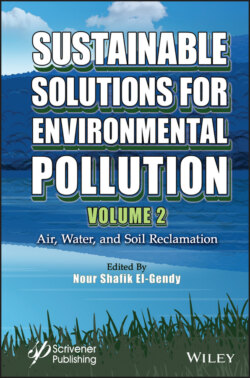Читать книгу Sustainable Solutions for Environmental Pollution, Volume 2 - Группа авторов - Страница 35
1.8.2 Micropollutant Removal
ОглавлениеEither live or dead, algae are able to accumulate metals; however, only the accumulation by live algae is discussed here. The extraction of heavy metals by microalgae takes place in two stages. A first stage of rapid extracellular passive adsorption (biosorption), occurring in both living and non-living cells. The presence of peptide and polysaccharide polymers (cellulose and alginate) on the cell wall of the microalgae provides numerous nonspecific adsorption sites, allowing the metal biosorption. The second stage is a metabolism-dependent process of slow intracellular diffusion and accumulation (bioaccumulation). After active transport through the cell membrane, peptides and proteins, such as glutathione, metallothionein proteins, oxidative stress reducing agents, and phytochelatins, bind to the metals (Leong and Chang, 2020). During the slow and generally irreversible bioaccumulation process, heavy metals accumulate inside the cell and bind to intracellular compounds, such as polyphosphate bodies, and/or inside vacuoles (Suresh Kumar et al., 2015).
Oberholster et al. (2014) have studied the bioaccumulation potential of selected filamentous macro-algae species at different pH ranges for possible treatment of AMD. The bioconcentration of metals (mg/kg dry weight) measured on the field in the filamentous macroalgae mats based on Oedegonium crissum, Klebsormidium klebsii, and Microspora tumidula was generally higher for Al and Fe than for Mn and Zn.
Persistent Organic Pollutants (POPs) are synthetic chemicals capable of long-range transport, persistent in the environment and with a potential to bio-magnify and accumulate in ecosystems. The most widely occurring POPs in water systems are related to agriculture runoff [pesticides], to industry [polychlorinated biphenyls (PCBs)], to urban wastewater with flame retardants and surfactants [including PFOS (Perfluoro-octanesulfonic acid)–based products, polychlorinated dibenzo-p-dioxins (PCDDs), and dibenzofurans (PCDFs), commonly known as “dioxins”], and to domestic pollutants (e.g., detergents, pharmaceuticals, and personal care products). As with all wetland techniques, the effectiveness of phyco-remediation in eliminating organic pollutants depends on a series of processes such as photo-degradation, adsorption, bioaccumulation, biodegradation, and volatilization (Gaur et al., 2018).
